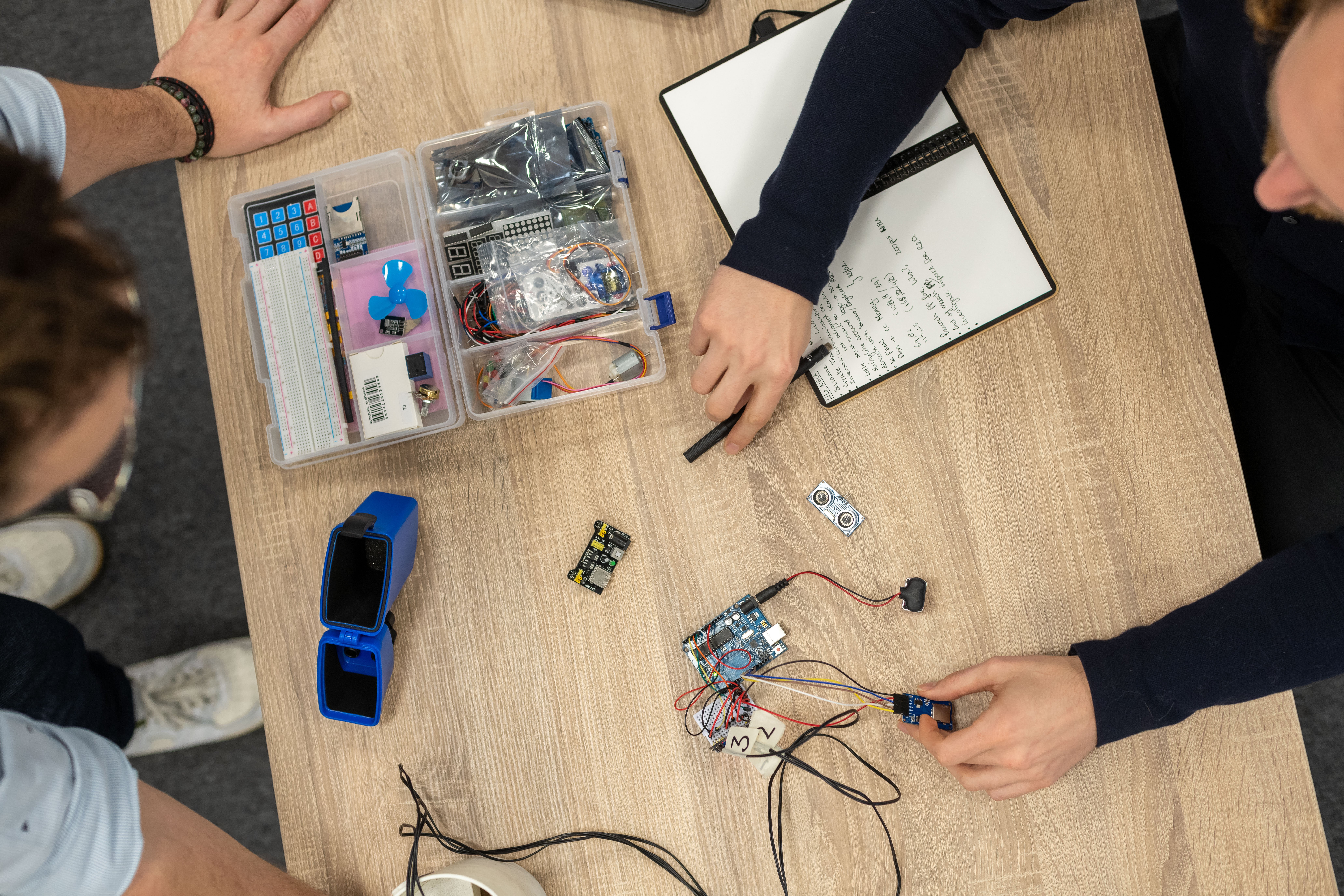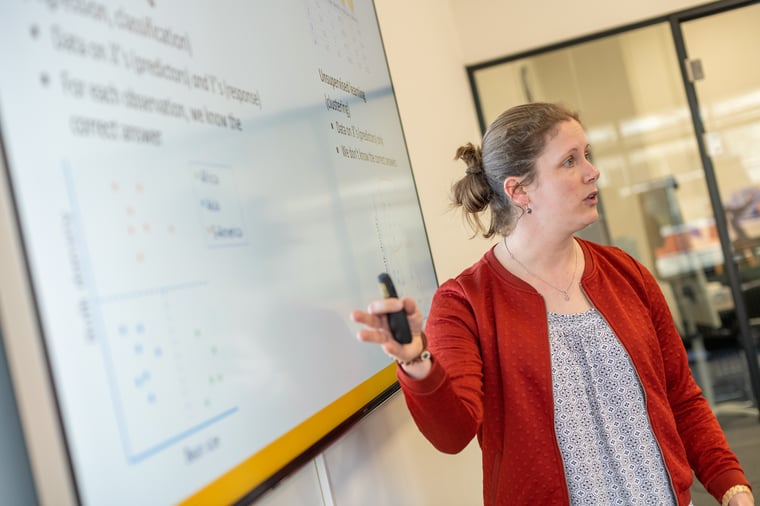By Dorien Lutgendorf, Senior Reliability Specialist at Holland Innovative
Dorien Lutgendorf is a Senior Reliability Specialist at Holland Innovative - where project management, product development, and reliability engineering are central. Clients include ASML, VanderLande, ABB and the Johan Cruijff ArenA.
I admit I'm a bit of a nerd. That is probably why I became so enthusiastic about reliability engineering. Not exactly the hippest field in product development. Yet reliability - knowledge about the life cycle of products - is a must for long-term innovation. And the field has become a lot more interesting with the recent addition of data science. By combining the two, companies involved in product development, from design to launch and beyond, can save themselves a lot of headaches. Let me explain why.
Why is reliability engineering important, anyway? When companies develop a new product, they focus almost exclusively on functionality. Their new product simply must work as soon as it rolls off the assembly line. However, how long the product will last and when it may break down - depending in part on how, when and where consumers use it - are questions that are rarely asked. And even less frequently answered.
The Safety Net of Innovation
This is where reliability engineering comes in. Through data collection, functionality requirements and loading profiles, risk analysis and field test design, a reliability engineer (RE) tries to get the clearest possible picture of how the new product will continue to perform many years into the future. Reliability is the safety net of innovation, ensuring that your new product is robust enough to last its predicted lifetime in one piece.
Take a company that makes a new gearbox for a car. To determine the lifespan of that gearbox, an RE must determine, among other things, how often users shift from second to third and from third to fourth gear. In this way, he or she will get a good idea of the forces acting on the individual gears, and the engineers can make adjustments to the design if necessary. Later in the process, the RE designs a test plan in order to get the most accurate estimate possible of how long the gearbox will function before something breaks and it has to go back to the factory for maintenance.
Far too optimistic
Yet reliability engineering is an afterthought for many companies. It is shocking how often I get a glazed look back when I ask managers or engineers how long they expect their product to last before a defect or malfunction occurs. Because without this crucial information, you run the risk of overloading your maintenance department when the gearboxes all come back after one year to be repaired.
There are countless examples of companies paying top dollar for ignoring their reliability homework. Often they think a simple functionality test is enough. Okay, the product works, but will it still work after five years? Most companies are far too optimistic when it comes to reliability testing. They think it will all work out. When something does happen it is too late to do anything about it. Long story short: taking reliability seriously improves the lifetime of products, saves maintenance costs, and prevents embarrassing incidents and accidents.
Time to Market Stress
One of the problems is that in product development today, Time To Market (TTM), or the time from design to launch, has become all-important. Under TTM pressure, products are launched without sound reliability testing, sometimes with disastrous results. Consider, for example, Samsung, which had to recall its brand new Galaxy Note 7 phones in 2016 after they spontaneously caught fire in users' bags and pants pockets. By devoting enough time and attention to reliability testing, such incidents are preventable.
In the unlikely event that there is not enough time for proper testing, it is essential to monitor the performance of your product very closely in the first months after launch. With the help of reliable data from the first users, you can adjust the product and still release an improved and updated version later. Then, of course, the feedback loop from those first users must be properly implemented.
This is why data science is such a valuable addition to reliability engineering. Data has always been important for determining life span, but because data is now freely available everywhere, the possibilities are endless. In addition to real-time feedback from first-time users, you can also track each machine or product individually, which makes maintenance much more efficient and less expensive. In addition, valuable information about the loading profiles of different consumers gives you the chance to make improvements early on.

Finding Patterns and Trends
Let me illustrate this with the example of a company that installs wind turbines at sea. If their installation equipment breaks down somewhere on the open sea, the maintenance department has to fly in the spare parts by helicopter - an extremely expensive operation. By using data science to digitally monitor your equipment, you can create detailed user and load profiles. By recording how long and how frequently the materials are used, what weather conditions they had to endure, etc., you can predict exactly when a particular piece of equipment needs maintenance. And that maintenance can then take place on land, instead of the material floating helplessly around somewhere at sea.
It is quite a challenge to collect data from all these different sources inside and outside the company. You need data from the engineering department about technical details, data from customer service about problems and defects, data from the sales department about how many products are circulating in the field, and data from the users themselves. It takes a little IT knowledge to collect the data and then intelligently tie it together to discover meaningful trends and patterns.
Along with that, a word of caution. It's easy to take a random data set and derive patterns from it, but data sets can have built-in biases or be incomplete. Then the patterns and trends don't mean much and it can even be dangerous to build business propositions on them. You need statistical knowledge to assess what a dataset does and does not show.
Holland Innovative & The Hague Tech
Holland Innovative specializes in reliability engineering as part of product development. Recently we joined The Hague Tech, a start-up community in The Hague. Start-ups and companies that develop smart products with embedded digital technology can benefit greatly from the combination of reliability engineering and data science. Both at the beginning of the product development journey, when you need good tests and analysis to determine the lifetime of your product and after launch, when user data keeps you constantly up-to-date on how your product is performing. We would like to expand our network in Randstad.
Feel free to contact us to discuss the opportunities and possibilities of reliability engineering and data science for your company or product line.





.jpg?width=200&name=Holland%20Innovative%20summer%20academy%20-%20Project%20Management%20Masterclass%202%20(2).jpg)